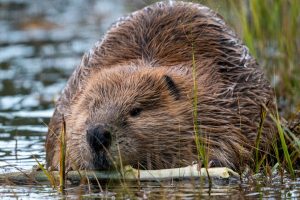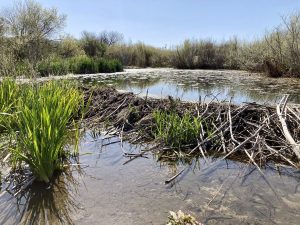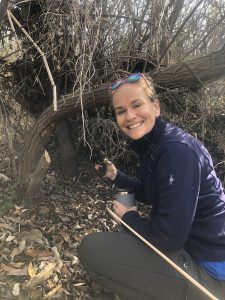Smokey the Beaver: Can Beavers Prevent Wildfires? — Lecture recording
Webinar Recording of an Online presentation with Dr. Emily Fairfax
This event occured over Zoom on November 17, 2021.
This Zoom webinar included a live presentation followed by a Q & A.
For the link to the recording, click the title: Smokey the Beaver presentation with Emily Fairfax
Beavers are native to California—from the high Sierra all the way down to the coast. Beaver dams also play a key role in protecting ecosystems during drought and in regulating the spread of wildfire. Unfortunately, the European fur trade decimated their population, and by the early 1900s very few beavers remained in California.
Today, beaver populations are on the rebound—just in time to help us deal with increasingly intense wildfire seasons. Thanks to recent conservation initiatives, we may start seeing a lot more beaver dams in our local watersheds—including in and around the Santa Ynez River. So what exactly do beavers do, how do they protect us from wildfire, and what is the current state of beaver policy in California? Come to this talk and find out—it’ll be a dam good time!
Dr. Emily Fairfax is an Assistant Professor of Environmental Science and Resource Management at CSU Channel Islands. She earned a PhD in Geological Sciences from the University of Colorado Boulder. Dr. Fairfax uses both remote sensing and field work to understand how beaver activity can create drought and fire-resistant patches in the landscape under a changing climate. Her colleagues and students are not kidding when they say Dr. Fairfax can talk about beavers all day.











